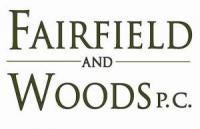(This article first appeared in Colorado Real Estate Journal, June 20, 2007)
“To be successful you have to be selfish, or else you never achieve…” -Michael Jordan
The challenge in creating a successful, smoothly running mixed-use community of divergent residential and commercial interests lies in how “sharing” is handled. Preparing the legal documentation for and administering a mixed-use community is largely an exercise in determining how to share and, more importantly, how to avoid sharing.
In general the commercial owner, investor or lender wants to be able to see the edges of its asset. It wants the asset discreet and definable so that it can be readily appraised, financed and controlled. It can be confounding for the commercial interest holder to share with residential owners, especially when all uses are placed within the same owners association. Typically, the more the components of the commercial asset are shared with residential owners, the greater the challenge to commercial interest holders to achieve and maintain predictability and control.
The general thesis is, then, that the benefits of a mixed use community can be maximized by minimizing sharing.
What is shared in a mixed-use community? Places such as drives, hallways, fitness centers; Things such as utilities, parking, governance; and Costs associated with the shared Places and Things, such as insurance, taxes, maintenance, utility and administration costs, are all shared to some extent in a mixed-use community.
In general, there are three established approaches to share-avoidance in mixed-use communities, each approach involving a different amount of sharing. These alternative approaches are suited to different circumstances. The first relies on the use of cross easements, the second on sub-condominium associations within a master association, and the third achieves share-avoidance by creating separate voting classes within a single condominium association.
Let's look at the first approach, the cross easement. In some cases, depending upon the design of the project, though the residences and the commercial components may need to share some Things, and therefore some Costs, it may be possible to avoid a mixed use condominium association by using cross easements. This can usually be done if the residences and commercial spaces are located on separate legal parcels or separate lots.
The benefit is using cross easements is that they create stable and predictable relationships that are not susceptible to change. The developer can establish from the outset who gets to use what and when, and who must pay whom and how much. The developer can place control over the commonly-used property where it wants it, and it's not as susceptible to change and challenge by residential owners and association boards. If properly structured, a cross easement will not be subject to the leverage granted to minority voting members by State condominium laws.
On the other hand, cross easements are less beneficial when the residences and commercial spaces, though on separate parcels, share lots of Things and Places; that is, if they are necessarily densely integrated. Cross easements do not handle such complexity well. Secondly, cross easements tend to be inflexible, perhaps a little too stable and predictable. They don't evolve well as a community evolves; they can't respond readily to new and unanticipated issues that a community encounters after the easement was drafted and recorded.
If the sharing relationship among the mixed use community must be densely concentrated and integrated in a particular project, and/or if the commercial and residential components are in a single building or otherwise cannot be feasibly subdivided into separate parcels, then the developer may need to look to the next option.
In this next option, the residences and the commercial component are each placed in their own separate sub-condominium associations, and the shared Things and Places reside in a master association. Share-avoidance is achieved by placing as much as possible that is needed to sustain the residences into the residential sub-association; and the same with the commercial. This enables the residential and commercial interest holders to control their own respective affairs. The objective is to minimize the master association's obligations and interests while maximizing the ability of each element of the mixed use community to exist without interference from the other.
But now you have two, or three or more associations and that's a lot of administrative complexity. In some simple mixed use communities, multiple associations may not be necessary. The classic example is a large residential building with a coffee shop or a flower shop and no more commercial elements. In this case the retail component lacks the critical mass to sustain its own sub-association, and therefore the usual approach is to place everyone in a single condominium association, but create different classes of membership for the residential owners and the retail owners. This approach also involves delegating as much authority as possible to each class to run its own affairs, except as to elements that must be shared.
This summary of alternative structures is cast in fairly broad terms. In reality, there is quite a bit of cross over between these options, and there are options within options. It's therefore important for the mixed use developer to strategize how to structure sharing early in the development process. This means the developer should seek input from its community formation team early on. The condominium surveyor, the title company, the association property manager, the sales and leasing brokers, the community formation lawyer, the project approval consultant (i.e., the consultant who assists in obtaining FHA and Fannie Mae approvals for the residential component), will all have something to contribute in thinking through these sharing issues.
For example, the brokers will weigh in on whether the particular sharing system selected will be marketable. The association property manager will consider whether the selected sharing system is sustainable and can be administered long into the future. If the developer wants FHA and/or Fannie Mae approval for the residential component, the project approval consultant will want to make sure that the developer hasn't over-burdened or under-represented the residences, and that by the time of the first residential sale the residences have access to any and all components of the community that they need to function.
The message is to start early in planning the share-avoidance system, as it may impact design decisions, marketability and the efficient operation of the mixed use community into the future.



 />i
/>i

